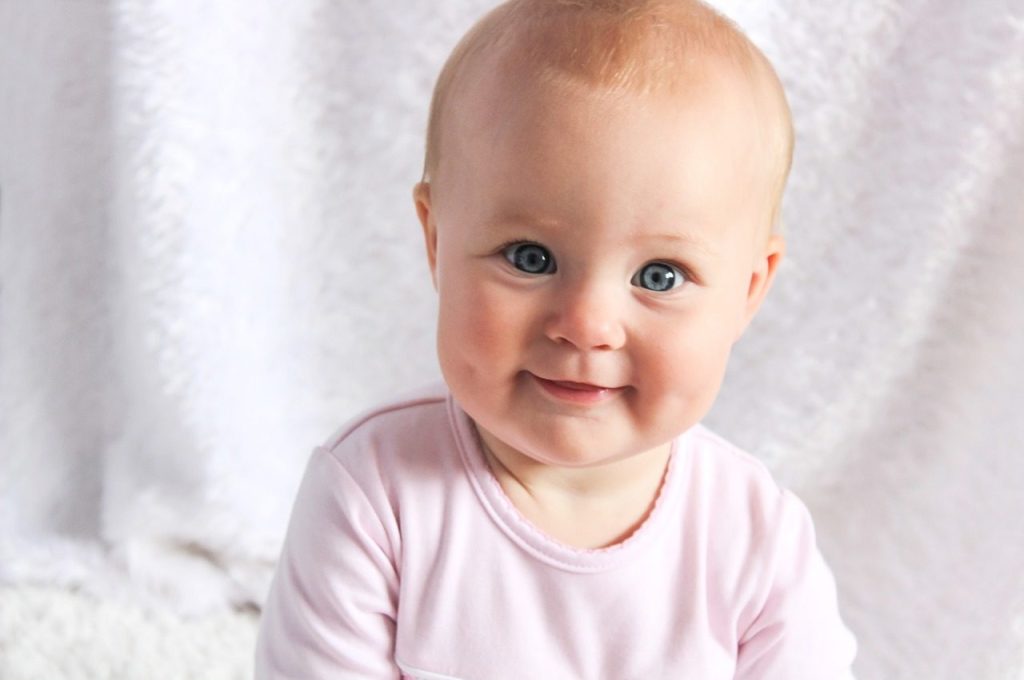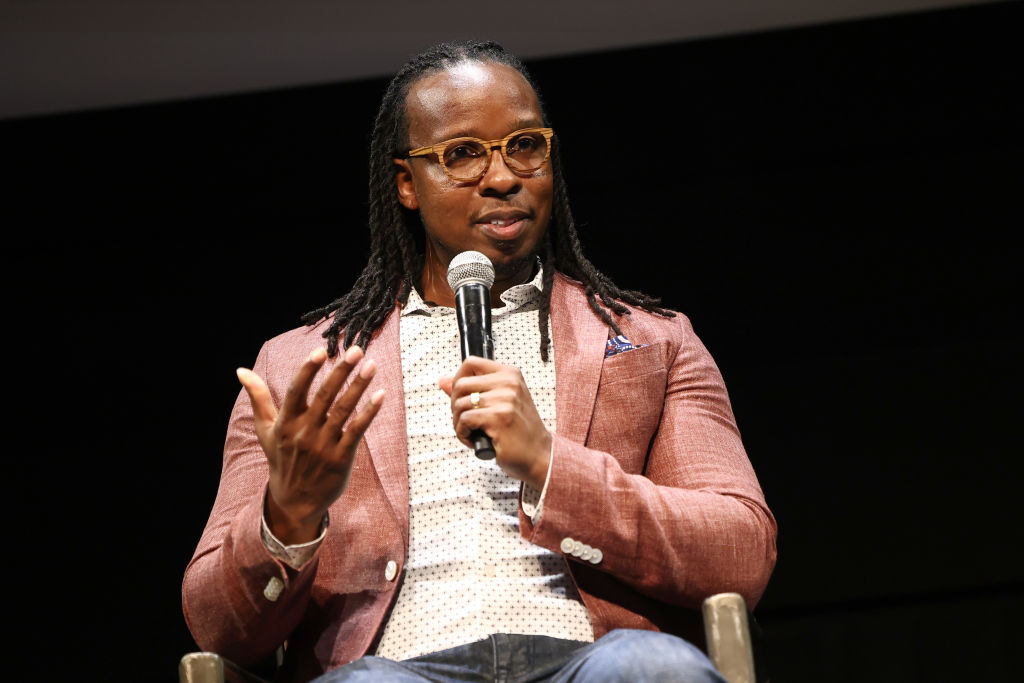Babies, look at them: waddling about the place, falling over, crying, needy. Those racist bastards. Yeah that’s right, you heard me. Babies are racists too, they always have been. Unless you start doing the work, they always will be.
Haven’t you noticed? Don’t you have a toddling daughter, a farting son, a drooping nephew, a drooling niece? Haven’t you noticed the obvious: these days, babies are all racist bastards. When you’re not looking, your baby is secretly cutting eye-slits in a white bed sheet. When you’re in the kitchen, making their soft, puréed dinner, your baby is skulking by the letterbox, quietly waiting for a delivery of Mein Kampf. Babies are hanging out on 8Chan. They’re all out there: eugenicist babies, white supremacist babies, birther babies. If babies could talk…well, all I will say is thank goodness they can’t talk. Recorded instances of hate speech wouldn’t spike — they’d explode. Babies, man, goddamnit. Racists, the lot of them. What the hell are we going to do?
‘We know that by two years old,’ warned megabrain anti-racist guru Ibram X. Kendi the other day, ‘children are already consuming racist ideas.’ Sure, sure. If there’s a racist sitting on your corporate board, lurking around campus, or hatefully babbling in a pram somewhere, you better believe Kendi will sniff them out. Racism is Kendi’s thing, his groove, his métier. He was first catapulted to prominence when, in 2016, he became the youngest person to win the National Book Award for Nonfiction, for his surprise hit Stamped from the Beginning: The Definitive History of Racist Ideas. Next up was his 2019 memoir-manifesto How to Be an Antiracist (‘dogmatic’ and ‘brilliantly simple’ according to a wowed Guardian reviewer). That one has rarely left the Times bestseller list, with more than half a million copies in print by June this year.
Writing about racism is a big, solemn business in America, particularly in the Academy. What distinguishes Kendi from all the others in his field? Well, his yuuge idea, his Newtonian revelation, is that everything is either Racist or Antiracist. Ideas, actions, policies are either Racist or Antiracist. That’s it. No on-the-other-hands, no benign ambiguities, no novelistic murk, no neutrality, no confusions, no mistakes, no unintended consequences. Nothing is ‘not racist’. This includes children, toddlers, babies. They too are drafted into the Kendian project. Hence the existence of another one of his mega-sellers, the picturebook Antiracist Baby, written with illustrator Ashley Lukashevsky.
Antiracist Baby is a brisk read at 24 pages. Rather than telling a story, Kendi has translated his adult books into nine miniature antiracist commandments for kids. Each of these takes up a double page spread, paired with Lukashevsky boldly colored, beefily outlined cartoons of babies, parents, caregivers and animals. At the back of the book Kendi addresses parents, who are the real audience: ‘we should teach our kids to be antiracist before they fully understand what it means to be antiracist.’ Cool.
Still, I thought I owed The Spectator’s readers a review of Antiracist Baby with an actual baby in tow. At 26, and bitterly immune to the charms of cartoons, I feared I would not do the book justice, social or otherwise. I rang my sister, who, as luck would have it, has recently produced a baby.
‘I need to borrow Rosie.’
‘Why?’
‘The Andrew W. Mellon professor in the Humanities at Boston University thinks she might be a racist.’
‘Really?!’
‘Yeah, but don’t worry, he’s written a picture book that should solve the problem.’
‘OK…well you can have her on Tuesday. What’s this book called again?’
As for Rosie, I suppose she needs a brief synopsis. She is 21 months old, going on 22 months. She has a wide, even expressive vocabulary at her command: Mama and Dada. Not to forget the usual speech menu: colors (rainbow varieties) and animals, farmyard beasts especially, all accompanied with a woof-woof-here and a quack-quack-there. Diapers are filled as a matter of routine, with ruthless enthusiasm. Rosie has devilish energy. When I wake up — another day of life — wheezing, decrepit, groggily reaching for my morning cigarettes, hazily preparing five consecutive instant coffees, Rosie is two or three hours into her day. Already she is striding, yelling, sprinting around the place. But her real calling card is her laugh, a booming ACK-ACK-ACK, like a flak cannon in one of the black ’n’ white wars of the last century. Her favorite food? Blueberries. Her politics? Ludicrously inscrutable. Is she a racist? My heart says it’s doubtful — but Prof Kendi warns me against such sentimental feelings.
So I read Rosie Antiracist Baby, once before her afternoon nap, once before her evening slumber. The great difficulty of this book is reading it. Kendi, no doubt inspired by centuries of light verse aimed at children, has decided to write his nine commandments in rhyming couplets. Now, it would be fair to say that these couplets do not always scan evenly. Take commandment no. 7: Nothing disrupts racism more than when we confess/the racist ideas that we sometimes express. That commandment is typical. Most of them mingle the sinister with the confused — imagine a heroically drunk Robin DiAngelo incautiously going ahead with delivering a social justice PowerPoint to some corporate middle-managers.
The vocabulary Kendi uses is ceaselessly complex. Try and explain what ‘equity’ or ‘policies’ or ‘violent’ means to a toddler. See how far you get. Rosie, baffled by the words, was at least engaged by Lukashevsky’s cartoons, though I have seen her more enthused by others before. Her greatest joy came when we reached the end. It was here that Rosie saw color — the endpapers are block purple. BURBLE, said Rosie. She happily drummed the pages with her little hands for the next 10 minutes, about the same time it took me to read Antiracist Baby to her. If that’s not getting your money’s worth, then what is?
[special_offer]
Kendi wrote Antiracist Baby because ‘you don’t want to assume children are “blank slates” — this leaves room for racist societal messages to shape their understanding of racism instead.’ I realize that Kendi must have spent the last few years in the library, but if he thinks that the messages transmitted to children in the current year are racist, then he is hopelessly mad. Tolerance, love, harmony, and acceptance are relentlessly beamed at the adults of tomorrow. They have been for decades. Antiracist Baby is merely a foothill in the ever-extending Hindu Kush of social justice books aimed at children. The sad persistence of racial conflict, racial grievances and social inequality more generally, suggests that they cannot be taught away by candy-colored didacticism.
The larger problem with Kendi, and with the movement he represents, is how plodding his intellectual scheme is. First he takes human society, the most complex mechanism in existence, and draws a line down the middle of every cog in it. Then he declares one side of the line Good (Antiracist), while the other is Bad (Racist). That’s about as crudely reductive as an idea can be. It’s like suggesting the Ninth Symphony can be adequately played with a couple of coconut shells.
Often, in conversation, or reading new novels, scanning tweets, or watching films, the enormous condescension we all sometimes have towards the past becomes apparent. Looking at some awful historical bloodbath, or well-chronicled catastrophe, we look back and say, ‘How could people be so stupid’, or, ‘How could they believe such idiotic things.’ Yet here we are with Kendi’s ideas, so celebrated, so stupid, and so eagerly believed.

























